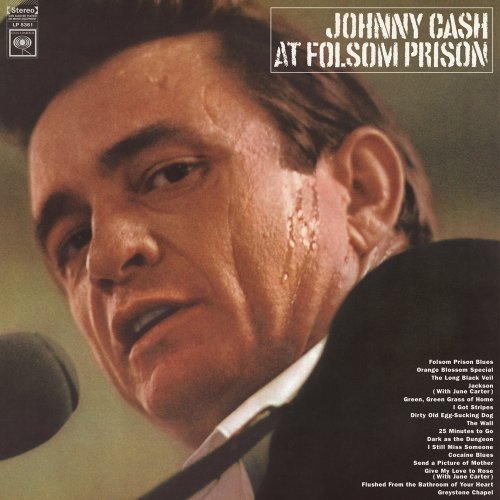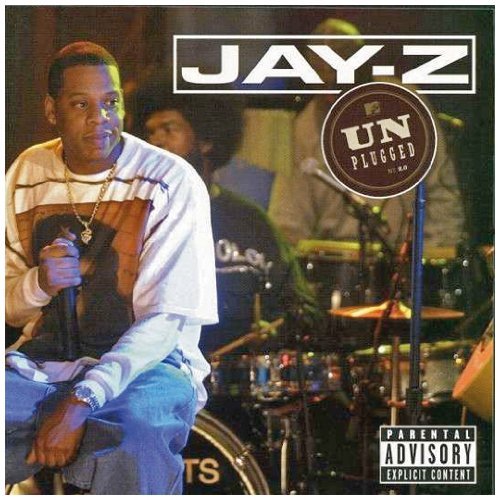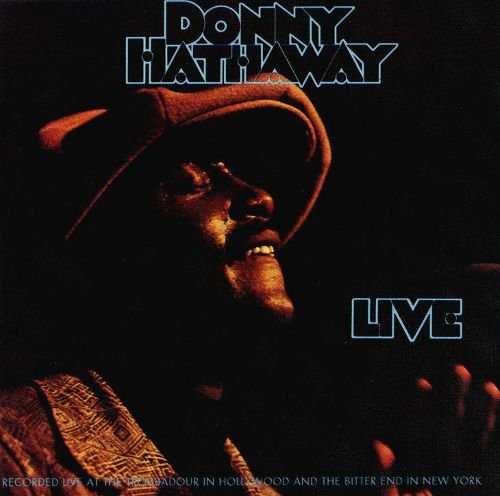En tant que performeurs, les musiciens sont contraints de s'ouvrir d'une manière différente sur scène par rapport à un enregistrement studio. Sur scène, les choses peuvent mal tourner et il faut avancer ; en studio, un artiste peut revenir en arrière. En tant que fans, nous attendons quelque chose à la fois familier et unique lors d'un concert, une occasion de nous plonger un instant dans des versions live des chansons que nous aimons. Nous pouvons scruter et étudier un enregistrement, mais un concert ne peut pas être mis sur pause. Les albums live sont des entreprises périlleuses, mais dans le meilleur des cas, ils ne capturent pas seulement l'essence d'un enregistrement studio original, ils propulsent le familier dans de nouveaux territoires.
nAvec tout cela en tête, nous avons rassemblé une liste de dix albums live essentiels à posséder en vinyle.

##Johnny Cash: Johnny Cash At Folsom Prison “Hello, I’m Johnny Cash,” the then 35-year old country star famously told a roomful of prisoners on a January day in 1968. Cash played two shows for inmates at Folsom State Prison in California that Saturday. The resulting live album, Johnny Cash At Folsom Prison, was released the same year and turned out to be a pivot point in the singer’s career, an eventual chart-topper that paved the way for Cash’s own CBS variety show. The performances themselves, two sessions recorded nearly back-to-back in the morning and early afternoon, found Cash cozying up to the prisoners with a tracklist of site-specific and outlaw friendly songs. “Nobody asked me how I feel,” he welps when singing jollily about the last 25 minutes of a death row inmate’s life. Merle Travis’ ode to the perils of being a coal miner finds an appropriate second life in a room full of men serving federal sentences. On that second song, “Dark As the Dungeon,” Cash hushes an inmate who lets out a loud laugh during the recording. “No laughing during the song please,” he says with his own chuckle. “Don’t you know it’s recorded?” It’s the type of moment that makes live albums so potentially precious, little performance ticks and derailments like an interrupting laugh that not only bring a particular singularity to life, but break it open in the imagination.

##Bob Dylan: The Bootleg Series, Vol. 4: The “Royal Albert Hall” Concert Bob Dylan’s performance at the Free Trade Hall in England on May 17th, 1966 is one of the most bootlegged recordings ever and, correspondingly, one of the folk icon’s most infamous. The set, which was finally released as an official album in the late 1990s after decades of black market appeal, sits in the shadows of Dylan’s 1965 performance at the Newport Folk Festival, but they’re of a piece. At both shows Dylan ingratiated himself with the crowd with an acoustic set before launching into his newfound electric sound. (The performative split mirrored the half-and-half approach of the songwriter’s 1965 album Bringing It All Back Home.) At Newport they booed, at Free Trade Hall someone yelled “Judas!” On Vol. 4 you hear all of this, not just the immediacy of the heckle, but also the extended urgency of Dylan’s new direction. “Play it fucking loud!” the songwriter commands his band before they launch into the final song, “Like a Rolling Stone.” Without the recording it might be folklore, with it, the moment became history.

##Jay Z: Unplugged For a music built on live performance, there aren’t many great live rap albums. The best live hip-hop recordings aren’t commercial affairs, they’re block party and club recordings from the culture’s early years, in-the-moment Old School documents instead of posturing performances. Commercial live rap albums haven’t fared as well, but there aren’t many to choose from. Jay Z’s Unplugged, released before Hov dropped a dash from both his name and business life, is perhaps hip-hop’s best. The Roots released their own well-executed performance record two years prior, and while millions of Americans watch the band pull off house duties on The Tonight Show, it’s possible that the Philly outfit have never been as well channelled as they were by Jigga and MTV in 2001. What makes Unplugged so great is the way it translates Jay Z’s huge hits into rapalongs for a small room, and the chorus of female fans present at the 2001 taping seem capable of reciting every word of Jay’s songs. “Song Cry” is low-hanging fruit for an intimate coffeehouse-like set, but Jay didn’t shy away from tracks that seemed unimaginable with a backing band. “Can I Get A…”, a finnicky club banger that helped promote the 1998 action slapstick movie Rush Hour, gets an appropriately frenetic but crisp arrangement on Unplugged and morphs unexpectedly into “Hard Knock Life.” Jay’s rapping is almost out of breath at times, but he keeps pace. And while the credits quietly tuck a handful of genius instrumentalists into the performance, Mary J. Blige and Pharrell make show-stopping cameos near the end of the set.

##Donny Hathaway: Live Live, the first of two live albums recorded and released during Donny Hathaway’s lifetime, crystallizes the singer’s prodigious talents in the way only a performance can: his voice is unfathomably smooth in concert, his piano playing full of capably improvised riffing. He’s a humble showman. The album was recorded in two parts and on separate coasts with the A-side carrying a 1971 performance in Hollywood and the B-side a show recorded in New York later the same week. While the tracklist packages some of Hathaway’s most celebrated songs—“The Ghetto” gets spread out into a meandering, groovy jam while “Little Ghetto Boy” appeared here before it was officially released the next year—it’s the covers that steal the show. On the opener Hathaway and an impressive backing band that includes eventual Earth, Wind & Fire drummer Fred White take hold of Marvin Gaye’s “What’s Going On” and later serenade the crowd with a rendition of Carole King’s “You’ve Got A Friend.” It’s a cover of John Lennon’s “Jealous Guy” on the B-side that anchors the tracklist though, an under-celebrated moment of perfection.

##John Coltrane: Live At the Village Vanguard A four-night string of shows at the Village Vanguard in November of 1961 yielded some of John Coltrane’s best live work. A total of five tracks from the performances were split between two albums, three first released as Live At the Village Vanguard and then two later included on Coltrane’s more vital 1963 release Impressions. (In 1997 the full collection of performances was finally released as The Complete 1961 Village Vanguard Recordings.) The initial release was the first recording to feature Coltrane’s pivotal classic quartet, a band that would record A Love Supreme a few years later in 1964. Eric Dolphy makes an incredible appearance on the nearly 14-minute long “Spiritual” before the entire B-side is dedicated to the sly blues of “Chasin’ The Trane.” Live At the Village Vanguard stands on its own as one of jazz’s great live records, but the full set, which piles on different performances of the same compositions, pulls off a more important trick: proof that every live recording is different and special unto itself.

##Neil Young & Crazy Horse: Rust Never Sleeps By 1979 Neil Young had already led a busy music career: there were the Buffalo Springfield albums, his solo stint and the formation of Crazy Horse, his legendary drafting into the Crosby, Stills & Nash all star team. At the end of a weary decade and fifteen years into his career, Young sounds resilient on the opening song of Rust Never Sleeps: “Rock and roll is here to stay / It’s better to burn out than to fade away.” It’s eerily autobiographical. The album itself, which was recorded live and spiced up in the studio, builds from a subtle acoustic set into a hard rock attack, finishing with the same song and promise that starts the show but louder and reinvigorated.

##Nirvana: MTV Unplugged In New York (Live) Nirvana’s legacy will always be tied up in their changing the course of rock music in the early 1990s, and just as inspiring as the sound, the band had a knack for making listeners feel perpetually uneasy. Nowhere is the tenseness of Kurt Cobain’s reluctant star power as raw as it was during Nirvana’s famous MTV Unplugged album. Recorded five months before Cobain’s suicide and released eight months after the tragedy, Unplugged is a gut-wrenching listen. The performance stripped bare the band’s sound and rise to fame and instead produced a lean, mostly acoustic set peppered with covers and largely overlooked songs.
Cobain introduces the set with a slight at the band’s swelling audience. “This is off our first record, most people don’t own it,” he says of “About A Girl.” It’s a wonderfully restrained performance that later opens up into vulnerable, self-deprecating territory on Cobain’s part. “I didn’t screw it up did I?” he quips after a David Bowie cover. “But here’s another one I could screw up. Am I gonna do this by myself?” he asks before a legendary solo performance of “Pennyroyal” tea. It’s beautiful and hard to listen to, but thank God he did.

##James Brown: Live At The Apollo, Vols. I-IV Harlem’s Apollo Theatre is a hallowed venue. In the 1960s, a boom period sandwiched between darker times for the Theatre, the Apollo was both a proving grounds for amateurs and a sanctified stage for stars. James Brown recorded his first live album at the Apollo in 1962 and the record’s runaway commercial success kept him coming back for the next decade. A couple years ago a digital iTunes box-set flew under the radar in packaging all four of Brown and company’s Apollo performances. The last one, Vol. 4, had puzzlingly never been released as a standalone before and has just now finally been issued as a Record Store Day exclusive. It might be a cheap trick to include a four-album set on a Top 10 list, but now that each album is available on vinyl, at least it fits. More pressingly, each of these records is vital. At just over 30 minutes long, Vol. 1 is the shortest and most straightforward by far, and it’s also one of the best places to begin digging into Brown’s career, live or otherwise. Vol 3. and the just-released Vol. 4 are brilliantly energetic showcases that center the JB’s propensity for jam medleys and the place of stars like Lyn Collins and Bobby Byrd.

##Curtis Mayfield: Curtis In Chicago - Recorded Live! Curtis Mayfield was a star before he left The Impressions, but his early solo career made it obvious. For this reason it wasn’t a stretch for his sophomore album to be a live record: he already had hits to run through. And while that 1971 Curtis/Live! album is more regularly lauded as Mayfield’s essential performance record, two years later he let loose another wonder in Curtis In Chicago - Recorded Live! In that short two-year span Mayfield released a trio of bona fide classics in Roots, Super Fly, and Back To The World. Curtis In Chicago feels like a veteran star still on the rise, and it’s a showcase for various Impressions configurations as well. The politic-forward funk of Mayfield’s contemporary music and the throwback sweetness of Impressions vocal arrangements are blended in the clean delivery of a variety show. To my personal delight, former Impressions-lead man and about-to-break soul enigma Leroy Hutson gets a deserved shout out and chunk of solo time. Also, some kids from the audience chime in for an adorable participation section in which they share their career dreams before Mayfield plays his classic ode to childhood.

##Talking Heads: Stop Making Sense The Talking Heads’ Stop Making Sense is more revered as a concert film than it is as a standalone live record, but it’s wonderful in either form. Released in 1984 at the peak of the band’s success, the record is technically a soundtrack, a label that speaks to the weird and grand ambitions of the movie itself. In the movie the band seems to perform dramatically for the camera and the sake of cinematography as much as they do for the live audience. And the film doesn’t validate the performance with footage of fans, it’s all about the stage. It’s hard to shake the imagery while listening to the album, but the extended crescendo effect of the performance doesn’t need a screen. David Byrne offers up a rambunctious solo performance of “Psycho Killer” to kick things off and the whole thing builds in sound and band members to “Burning Down The House” and then a rattling rendition of “Once In A Lifetime.”As performers, musicians are forced to open up in a different way onstage than they might during a studio recording. Onstage, things go wrong and must move on; in the studio an artist can double back. As fans we want something both familiar and unique in a concert, an occasion to momentarily reside in living versions of the songs we love. We can scrutinize and study a recording, but a concert can’t be paused. Live albums are perilous hit-or-miss endeavors for this reason, but at their best they don’t just capture the essence of an original studio recording, they catapult the familiar into new territory.
Rejoindre le club!
Rejoignez-nous maintenant, à partir de 44 $Exclusive 15% Off for Teachers, Students, Military members, Healthcare professionals & First Responders - Get Verified!












